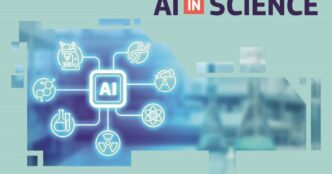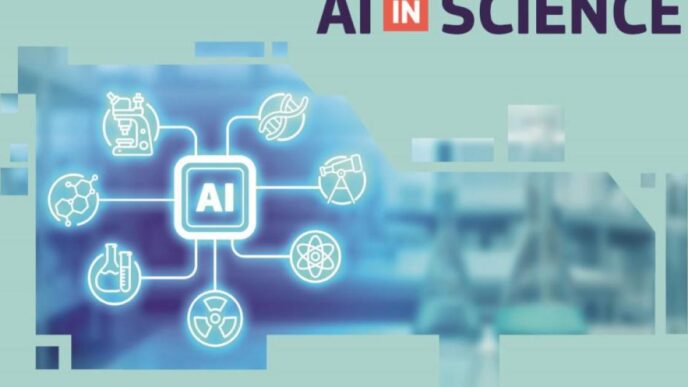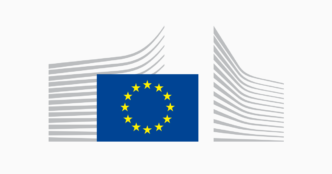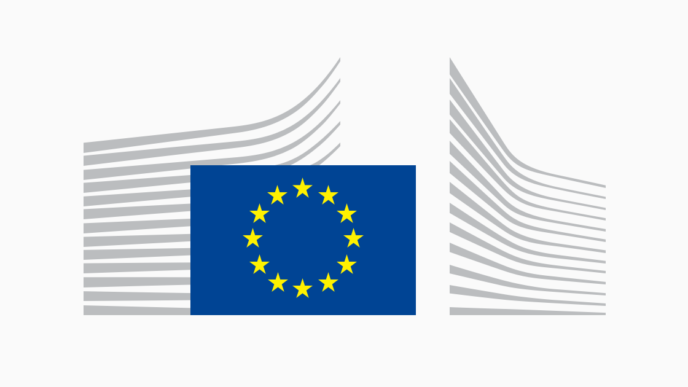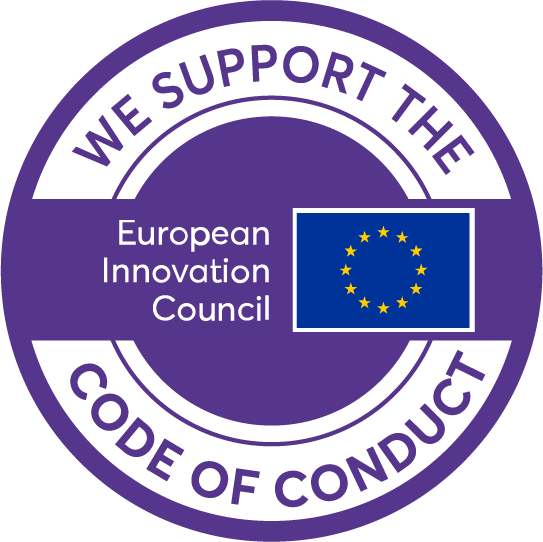Interview by Julie, Alain and Louise with Jean Dubois, a professional translator from Switzerland.
In today’s competitive landscape, becoming a translator requires more than just general expertise. The number of translators has surged, leading to an increasingly crowded field. This is why specialisation has become essential, particularly if your language is quite popular within the translation industry. For instance, languages, like German, are in high demand, whereas others, like Spanish, are much less so. In this blog, we’ll focus on legal specialisation in English-German translation.
As the interviewee prefers to remain anonymous, a pseudonym has been used in this article. Additionally, some of the interviewee’s responses have been slightly modified for clarity and readability, without altering their original meaning.
PART I: Interview With a Legal Translator
In this article, we will introduce the profession of Jean Dubois, a specialist translator and interpreter, who studied at the Institute of Political Studies, and holds a Master’s degree in Specialised Translation, EMT (European Master’s in Translation). He currently works in one of the federal offices of the Swiss Confederation, where he handles translations in English, French, German and Italian.
Julie, Louise, and Alain (JLA): In what way was specialising in the legal field beneficial for you?
Jean: My legal skills allowed me to become an institutional translator working for the Swiss Confederation. My specialisation comes partly from my legal studies and my experience in politics, NGOs, and the UN.
JLA: Why is it important to specialise today?
Jean: With the development of digital tools, such as CAT tools, online glossaries, dictionaries, and more recently neural language models (AI), general texts and, therefore, general translation have become more accessible to the general public. It is not something new: a translator has always tended to specialise, often in multiple fields.
JLA: What kind of tools do you work with?
Jean: There are CAT Tools, glossaries, reference documents, such as laws and ordinances, catalogues of standards and norms, specialised websites, blueprints, AI tools, specialised literature and internal documentation.
There is the Classified Compilation of Federal Legislation, which consolidates all the Swiss laws and ordinances, which is updated on an ongoing basis. On average, Swiss laws are updated every 3 to 4 years. I use DeepL Pro, along with glossaries from my federal office or from the EU, our translation memories, websites, such as Termdat, IATE, or Termium Plus. My work often involves European law, and I also rely on Eurlex for reference.
JLA: How many hours do you work per week?
Jean: I work 40.5 hours per week.
JLA: While translating legal texts, how do you approach them and what kind of style do you adopt?
Jean: We use and strictly respect the directives of the Swiss Confederation in matters of legal writing. While translating, you must ensure legal accuracy by comparing and homogenising terminology, titles and different correlated laws, ordinances, directives, etc.
JLA: How did you create your network?
Jean: I have a large network of former Political Science students and contacts with politicians, NGOs, UN staff, public servants, journalists etc. I also created a Swiss network, mainly by working for the Confederation. I attended training courses and conferences to meet other translators. I know everyone in my office. I’ve attended cocktails and taken part in training courses as well as in-house and intra-company events. Sometimes, I do tandems to learn or improve language and I have meetings with interesting people and colleagues.
JLA: What about your career path?
Jean: I studied Political Science for several years and did a year’s internship abroad. I worked for local authorities in France and for the UN. I went back to university to study for a Master’s in specialised translation. I did my first internship in a translation agency in Lausanne, and the second in Zurich. I worked for the Swiss Postal Service for several years, and now, I work at the federal office.
JLA: Have you always wanted to be a translator?
Jean: Initially, that wasn’t the idea: I wanted to work at a governmental level and in the public sector.
JLA: Do you need additional training to work as a legal translator?
Jean: Yes, I think it’s interesting to specialise in legal matters. There are specific legislative techniques for drafting laws and numerous professional courses and training opportunities available. I don’t work in criminal law – my focus is on public and administrative law, as well as European law.
Each country has its own distinct legal system. In Europe, the legal framework is often grounded in statutory law, while in the USA, it is more heavily based on case law. The law can be broadly divided into various branches, such as public law, international law, and private law, which covers areas like trade, business, and family law. Additionally, there is criminal law, along with many other categories and subcategories within the legal field.
So, yes, you do need a solid legal education.
JLA: Do you feel you are paid fairly for your work?
Jean: Yes, it’s fine.
JLA: What do you think about Artificial Intelligence (AI)? Does it have an impact on the legal translation profession?
Jean: AI is not capable of generating correct legal translations. AI does not understand its output, it does not know whether it is legally coherent, and the output may pose problems of legal security. Legislation is interconnected, and AI does not take this into account. AI has no human intelligence.
The rise of AI (neurolinguistic models) changes the job of a translator – it is an undeniable fact just as the Internet and CAT tools did in the past. Translators no longer keep shelves of dictionaries in their offices and can now translate more text in less time. The same applies to AI, the volumes translated by humans are increasing, as is the demand. The rise of AI doesn’t mean less translation: on the contrary, there is more text and more translation. I don’t believe AI will replace every translator because these tools remain simple (though very fast) and do not translate or understand what they produce: simple outputs, generated thanks to more or less regular training and statistical algorithms, which remain very confidential.
I will not go into detail about the energy and financial resources required for making these tools work, but it is an issue, which will become crucial in the future. The simple training of a very small neurolinguistic model, like the one used by the university of Zurich, consumes the same amount of energy as a town of 30,000 inhabitants. Just imagine what a tool like ChatGPT consumes. A simple question in ChatGPT generates more than a billion operations. Ecologically speaking, you can say that AI is not sustainable and definitely not environmentally friendly. Another question which is determinant, but which I will only mention, is data protection and copy rights. The data you put into these tools can be and will be used by multinationals even in professional versions like DeepL pro, which we use at the federal office. We are not allowed to use DeepL for sensitive or classified texts for example.
But let’s focus just on the job of the translator and the changes that AI has directly caused in our everyday work. One word: post-editing. As I explained before, an AI tool doesn’t translate or understand its output. Therefore, you need a human in the loop if you want to guarantee a good translation. The meaning must be controlled, the language must be corrected, and the style – adapted, so that the final text is understood by its future readers/public. Post-editing is different from revising a colleague’s translation. The focus is less on spelling and grammar, but more on style and meaning. AI has basically a bad style, and its output doesn’t look as if the texts were written by a native speaker. The absence of human intelligence means that the meaning of the AI output is not necessarily correct. Another interesting change worth mentioning is linked to what you could call the economy of translation. Since general texts and, therefore, general translations are now more accessible to the wider public, it has become necessary to classify translation tasks by the level of quality required in order to keep costs reasonable and ensure the translation remains profitable. For example:
- quality 0: lowest quality (internal or private e-mails, for example), rough AI translation, no human intervention,
- quality 1: good enough quality (external non-essential e-mails/messages), AI translation and minimal human intervention,
- quality 2: good quality (operational technical or legal documents, which remain internal), AI translation, major formal and technical human changes,
- quality 3: publishable quality (everything that goes external, online, published, laws, ordinances, etc.), AI translation, complete human post-editing and human revision.
In conclusion, I would say that the human has to remain in the centre of the process of translation – ‘human in the loop.’ An AI tool is not intelligent, it’s just fast and it’s just a new tool among many others at the disposal of the translator (CAT tools, glossaries, reference documents). And finally, don’t forget that translators are among the professionals who cope the best with technological and professional changes. We excel at adapting because we are curious by nature [Jean is smiling].
PART II: Comparison Between a Human and a Machine Translation
Next, we will explore how the human brain translates a legal text, followed by a comparison with translations of the same text generated by DeepL and ChatGPT. Jean will translate the text from English into French and then share his insights on the comparison.
Here is the link to the article:
https://www.unesco.org/en/legal-affairs/constitution?hub=66535
Text in English:
Article XIII – Amendments
1. Proposals for amendments to this Constitution shall become effective upon receiving the approval of the General Conference by a two-thirds majority; provided, however, that those amendments which involve fundamental alterations in the aims of the Organization or new obligations for the Member States shall require subsequent acceptance on the part of two thirds of the Member States before they come into force. The draft texts of proposed amendments shall be communicated by the Director-General to the Member States at least six months in advance of their consideration by the General Conference.
2. The General Conference shall have power to adopt by a two-thirds majority rules of procedure for carrying out the provisions of this Article.
Text translated into French by Jean:
Article XIII Amendements
1. Les projets d’amendement à la présente Convention prendront effet lorsqu’ils auront été adoptés par la Conférence générale à la majorité des deux tiers ; néanmoins, les amendements entraînant des modifications fondamentales dans les buts de l’Organisation ou des obligations nouvelles pour les États membres devront être ensuite acceptés par les deux tiers d’entre eux avant d’entrer en vigueur. Le texte des projets d’amendements sera communiqué aux États membres par le Directeur général six mois au moins avant d’être soumis à l’examen de la Conférence générale.
2. La Conférence générale aura le pouvoir d’adopter à la majorité des deux tiers un règlement en vue de l’application des dispositions du présent article.
Text translated by Deepl:
Article XIII – Amendements
1. Les propositions d’amendement à la présente Constitution prendront effet lorsqu’elles auront été approuvées par la Conférence générale à la majorité des deux tiers ; toutefois, les amendements qui comportent une modification fondamentale des buts de l’Organisation ou des obligations nouvelles pour les États membres devront être acceptés ultérieurement par les deux tiers des États membres d’entre eux avant d’entrer en vigueur. Les textes des projets d’amendement projets de textes des amendements proposés sont sera communiqués par le Directeur général aux États membres par le Directeur général au moins six mois avant d’être soumis à l’examen de la Conférence générale.
2. La Conférence générale aura le pouvoir d’adopter, à la majorité des deux tiers, un règlement intérieur pour l’application des dispositions du présent article.
Text translated by CHATGPT:
Article XIII – Amendements
1. Les propositions d’amendement à la présente Constitution entreront en vigueur après avoir reçu l’approbation de la Conférence générale à la majorité des deux tiers ; toutefois, les amendements impliquant des modifications fondamentales des objectifs de l’Organisation ou des de nouvelles obligations nouvelles pour les États membres devront, avant leur entrée en vigueur, être acceptés ultérieurement par les deux tiers des États membres d’entre eux avant d’entrer en vigueur. Les texte des projets d’amendement projets de texte des amendements proposés seront sera communiqués par le Directeur général aux États membres par le Directeur général au moins six mois avant leur examen avant d’être soumis à l’examen de la Conférence générale.
2. La Conférence générale aura le pouvoir d’adopter, à la majorité des deux tiers, des règles de procédure pour l’application des dispositions du présent article.
Jean’s comment on the three translations:
It was a very simple text – not a law, an ordinance, or a truly legislative document, or a contract, which are much trickier.
Both AIs didn’t even recognise it as a UN text, even though it is publicly available and has an official French version online. Maybe their last training was before the document’s publication date. Both made some terminology mistakes, some context errors, legal errors, and the text needed post-editing in terms of both style and fluidity. I cannot say that one is better than the other, both are just (very fast) machines that produce simple output. You need human intelligence to correct the output and transform it into a translation.
Conclusion
Translation is a field where AI is playing an increasingly important role. However, simply knowing multiple languages is no longer enough to be a successful translator, specialisation is essential to stand out in a competitive market. Legal translation, in particular, is in high demand and remains indispensable. Although machine translation and CAT tools can be useful, they have their limitations. This is why human translators remain crucial, especially in legal contexts where strict expertise and accuracy are required. In public services, translators tend to be more cautious about using AI due to concerns about confidentiality, which can be compromised with automatic translation, which is an unacceptable risk. In the private sector, however, translators are generally more open to integrating such tools.
In the end, while technology continues to evolve, the human touch remains irreplaceable in translation.
Bibliography
Constitution of the United Nations Educational, Scientific and Cultural Organisation, Article XIII – Amendments, UNESCO, 2024: https://www.unesco.org/en/legal-affairs/constitution?hub=66535
Software used
ChatGPT: https://chatgpt.com/


